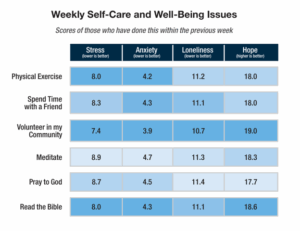
 Nathaniel Hawthorne's "The Birthmark" provides a glimpse of mid-19th century perfectionism. At the outset of that story, Aylmer, who has attained some stature in the scientific world, has also procured for himself a bride, Georgiana. Georgiana is an exquisitely beautiful bride — until shortly after the wedding. A tiny crimson birthmark on her face, heretofore thought "a charm," becomes for Alymer a repulsive reminder of his wife's humanity, her "liability to sin, sorrow, decay, and death …."1 The remainder of the story concerns the impact of this perceived imperfection on first, Alymer, then Georgiana, and their relationship. Eradication of the birthmark requires a substantial price; but then, perfection always does.
Nathaniel Hawthorne's "The Birthmark" provides a glimpse of mid-19th century perfectionism. At the outset of that story, Aylmer, who has attained some stature in the scientific world, has also procured for himself a bride, Georgiana. Georgiana is an exquisitely beautiful bride — until shortly after the wedding. A tiny crimson birthmark on her face, heretofore thought "a charm," becomes for Alymer a repulsive reminder of his wife's humanity, her "liability to sin, sorrow, decay, and death …."1 The remainder of the story concerns the impact of this perceived imperfection on first, Alymer, then Georgiana, and their relationship. Eradication of the birthmark requires a substantial price; but then, perfection always does.
Alymer and Georgiana are not alone in desiring a "higher quality of life." In 2003, the latest year for which compiled statistics are available, Americans underwent 8.3 million cosmetic procedures, according to The American Society for Aesthetic Plastic Surgery (ASAPS).2 The most common procedure was a non-surgical one: the injection of Botox to reduce wrinkles. Eighty-seven percent of all cosmetic procedures were done on women. The five most common surgical procedures were liposuction, breast augmentation, eyelid surgery, breast reduction, and rhinoplasty (nose alterations). The remaining thirteen percent of the cosmetic procedures — done on men — included most prominently liposuction, rhinoplasty, eyelid surgery, breast reduction to treat enlarged male breasts, and hair transplantation. More than 90 percent of the procedures were done on patients between the ages of nineteen and sixty-four years, with the primary age range for these procedures being thirty-five to fifty years in both sexes. For all of these procedures, Americans spent "just under $9.4 billion …; this figure does not include fees for surgical facilities, anesthesia, medical tests, prescriptions, surgical garments, or other miscellaneous expenses associated with surgery."3
Why do we do this?4 ASAPS President Robert Bernard, M.D., interprets it as a sign of a stronger economy that enables people to "… invest in the things that improve their quality of life …" It is a reflection of the priorities of Americans, according to Bernard.5 Carl Elliott, M.D., Ph.D., Associate Professor and Director of Graduate Studies in the Center for Bioethics at the University of Minnesota, casts it in a different light. In his excellent article, "American Bioscience Meets the American Dream," he calls it "sociology with a scalpel."6 He states further, "No longer do we simply see the possibility of treating social problems with medical technology; we see an ethical rationale for doing it. People who are stigmatized, unhappy, or unfulfilled are genuinely suffering, and their suffering can be addressed by doctors."7
Marsena Konkle labels it "made in the media's image," and cites not only the plastic surgery, but also the diet industry, as being willing to "help out." Says she, "Within the framework provided by the media, nothing else matters except how we look. Not smarts, not talent, not personality, not kindness, or spiritual health, or anything else. We are constantly being told that we must be made-over in the media's image in order to have any value."8
Somewhere within our psyche, individually and collectively, is the message that we are not enough. Whether that discontent is produced by the media, other societal cues, or the mirror alone does not seem to matter. The discontent is present. Is this a modern phenomenon, first noted by Nathaniel Hawthorne in 1843? Not at all. It is as old as the Garden itself.
In Genesis 2, Man and Woman, created in God's image, "were both naked, and they felt no shame."9 Then Eve is tempted to be more than she is — the perfection deception — and she takes the bait. Adam follows. The result: Then the eyes of both of them were opened, and they realized they were naked; so they sewed fig leaves together and made coverings for themselves.10
We may have forgotten what we once were, but we have not forgotten how to sew, and indeed, still are employed thusly. Whether by drinking a potion to rid ourselves of birthmarks, dieting to rid ourselves of excess — real or imagined — adipose tissue, or undergoing the scalpel to be "fixed," we are still sewing fig leaves to cover our nakedness. There must be a better way. And indeed, there is.
Genesis 1:26-28 details that we, men and women, were formed in the image of God — we are made to be "God-imagers." As a result of the Fall, recorded in Genesis 3, our imaging has been corrupted. That notwithstanding, the Psalmist reminds us that we are "fearfully and wonderfully made"11 This is a message that we apparently are not hearing well in our culture. Perhaps it is because not enough of us are saying it to one another. Particularly, it would appear, do we need to tell our mothers, sisters, wives, and daughters this truth. This is not to say that any is perfect, or that "putting one's best foot forward" is to err. Rather, it is to approve those qualities that render us our "best" selves; those qualities that draw us to one another and enrich each others' lives. King Lemuel informs our situation: "beauty is fleeting,"12 says he. We are wise if we listen to such sage advice. The Apostle Paul tells us to "… not become conceited, provoking and envying each other."13 Rather, he would encourage us to exhibit "love, joy, peace, patience, kindness, goodness, faithfulness, gentleness, and self-control,"14 qualities manifesting God's Spirit within us.
Nigel M. de S. Cameron states a proper perspective for us so very well in his Complete in Christ:
To be human is to be made in the image of God, and there is nothing higher to which we can aspire. For to be made in the image of God is to be made as much like God as someone who is not God could ever be. This amazing dignity, which attaches to human nature wherever it is found, is finally proved to us in Jesus Christ, since in the incarnation God took to himself the mode of existence which is also ours. And having once taken it to himself, he has not laid it down. Then and today and for all eternity, human existence is dignified by the astonishing fact that the God who created it has made it his own. …Any supposed advance on humanity is really no improvement at all, it is rather a deterioration. You cannot become super-human, only sub-human. Every attempt to go one step up simply takes us one step back. Nothing is higher than the image of God. How could it be?15
Let us not be deceived into thinking otherwise.
1 Nathaniel Hawthorne, "The Birthmark," in Nathaniel Hawthorne Tales and Sketches, (New York: Library Classics of the United States, Inc., 1982), p. 766.
2 The American Society for Aesthetic Plastic Surgery, "2003 ASAPS Statistice-8.3 Million Cosmetic Procedures: American Society for Aesthetic Plastic Surgery Reports 20 Percent Increase" (New York: ASAPS, 18 February 2004; accessed 26 January 2005); available from https://surgery.org/press/news-print.php?iid=325§ion=; Internet.
3 Ibid., p. 2 of 3.
4 It should be pointed out that not all surgery labeled "cosmetic" is merely for appearances. Certainly, some procedures are done to correct malfunctions or to repair trauma or diseased states. Such are not the focus here; this discussion is limited to the performance of procedures for the sake of "enhancement" alone.
5 Ibid., p. 1 of 3.
6 Carl Elliott, "American Science Meets the American Dream," The American Prospect, vol. 14, no. 6, 1 June 2003 (accessed 26 January 2005); available from https://www.prospect.org/print-friendly/print/V14/6/elliott-c.html; Internet; p. 4 of 5.
7 Ibid.
8 Marsena Konkle, "Made in the Media's Image," Francis A. Schaeffer Institute Perspectives (St. Louis, Mo.: Francis A. Schaeffer Institute, Spring 05), p. 5.
9 Genesis 2:25, New International Version (NIV).
10 Genesis 3:7, NIV.
11 Psalm 139:14, NIV.
12 Proverbs 31:30, NIV.
13 Galatians 5:26, NIV.
14 Galatians 5:22-3, NIV.
15 Nigel M. de S. Cameron, Complete in Christ (UK: Marshal Pickering, 1989; Carlisle, Cumbria, UK: Paternoster Press, 1997), p. 113.















